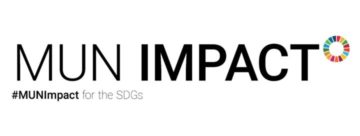BY TAZMIN RAHMAN, STAFF REPORTER
One of the most common issues plaguing the planet is climate change. Climate change has adverse effects upon us and our environment. SDG 13 focuses on ‘Climate action’ and SDG 15 on ‘Life on land’. SDG 13 and 15 are interrelated as life on land depends upon climate.Our presenters, Komal Gupta, Tanisha Saxena and Luna Mercuri from 100K Deeds Challenge division explained the impact of climate change on terrestrial ecosystem with precision and immaculate detai.In our session on topic, ‘Climate Change: Impact on Terrestrial Ecosystems’
They focused on Sustainable Development Goals 13.3 and 15.2.1to explain at length about the prevention and reduction of climate change.The session started with explaining terrestrial ecosystem.They conducted a quick survey on which ecosystem is the most favorite. Temperate deciduous forest came in first place ,with Taiga in second place and desert and grasslands turned out to be the third most popular ones.Then the presenters discussed the impact of climate change on terrestrial ecosystems, the first and main impact they considered was biodiversity loss. According to them, climate change could convert whole land areas from one biome to another, alter global biogeochemical cycles and isolate a myriad of species to extinction. The second main impact is food web disruption. Humans depend on animals and plants for food, medicine etc.It can cause huge food loss.As they discuss food web disruption, they explain the link between the food chains and dependencies between organisms. Climate change indirectly harms animals, causing extinction. Also, in recent days, with extreme discrepancies in the temperature a common consequence is a wildfire. Mainly the polar regions at stake. An increase of even 1 degree celsius causes several problems in cold places as sea level rises and ice starts to melt.
Now, how can we ignore soil degradation.They say it’s for climate change and poor management. They first explain soil degradation and explain that it isn’t easily recoverable.Then they explained the food web with a picture, and gave an example of the disruption of that food web. As a result there is a problem. Consumers can prevent this disruption, the presenters firmly believe.
Then came the anticipated brainstorming time with a short survey. Most catastrophic impact of climate change according to that survey was soil degradation, second was wildfire ,third was biodiversity loss and the least considered harmful impact was food web disruption.
Then a case study of South America’s biggest rainforest,the Amazon, was discussed with the evident impact of climate change on that forest. . Then a case study about Oceania’s Daintree rainforest.
The solutions for climate change were explained to the attendees by the presenters with a video. They give 3 main solutions. First is restoring forest, second is protecting wildlife and third is restoring coastal habitats. 83 percent of mammals are killed by human.Legal logging, volunteering ,adopting plant based diet, and moving on to alternate energy are also some solutions.
Then they introduced UNEP and some, then introduced the EAC coalition. Luna, and Komal introduced the ACT NOW campaign by the UN . The discussion then moved over to ECOSIA and its plans .Ecosia is a search engine based in Berlin, Germany. It donates 80% of its profits to non profit organizations that focus on reforestation. Then there was a short quiz with 2 questions, especially to make the session interactive. They talked about the Paris agreement in 2016 and the Kyoto protocol in 2012.There was a graphic discussing the success of it and the speakers talked about their experience related to climate.Then they talked about their work for climate action like attending high profile meetings etc.then they talked about the 100 k deeds challenge.
They discussed what we can do for SDG 13 and 15. According to them we have to Reduce paper consumption, spread awareness and conduct workshops.plants trees etc. for SDG 13. They also gave some ideas of what we can do for implementing SDG 15, they gave 6 plans. Then there was the last interaction asking about sharing our own ideas.
In short, the session was very interactive and eye opening. The hosts gave solutions and some examples of good organizations related to SDG 13 and SDG 15 as they shared their experiences. We can understand that we have to take actions from our level to fight climate change and save the terrestrial climate.
For full session, click here.
